Coffee and dish soap uses in the garden? You might be thinking, “Wait, what? That sounds like a recipe for disaster!” But trust me, these common household items are secret weapons for any home gardener looking to boost their plants and tackle pesky problems. For generations, resourceful gardeners have been passing down clever tips and tricks, often born out of necessity and a deep connection to the land. Think of it as a modern twist on age-old wisdom, blending grandma’s remedies with a dash of DIY ingenuity.
Why should you care about these unconventional gardening hacks? Well, let’s face it, gardening can be tough! Pests, diseases, and nutrient deficiencies can quickly turn your green dreams into a brown nightmare. But before you reach for harsh chemicals, consider the power of coffee and dish soap. I’m going to show you how these simple ingredients can be used to deter unwanted critters, enrich your soil, and even clean your gardening tools. Plus, it’s a budget-friendly and eco-conscious way to keep your garden thriving. So, grab your coffee grounds and a bottle of dish soap, and let’s unlock the amazing coffee and dish soap uses that will transform your garden!
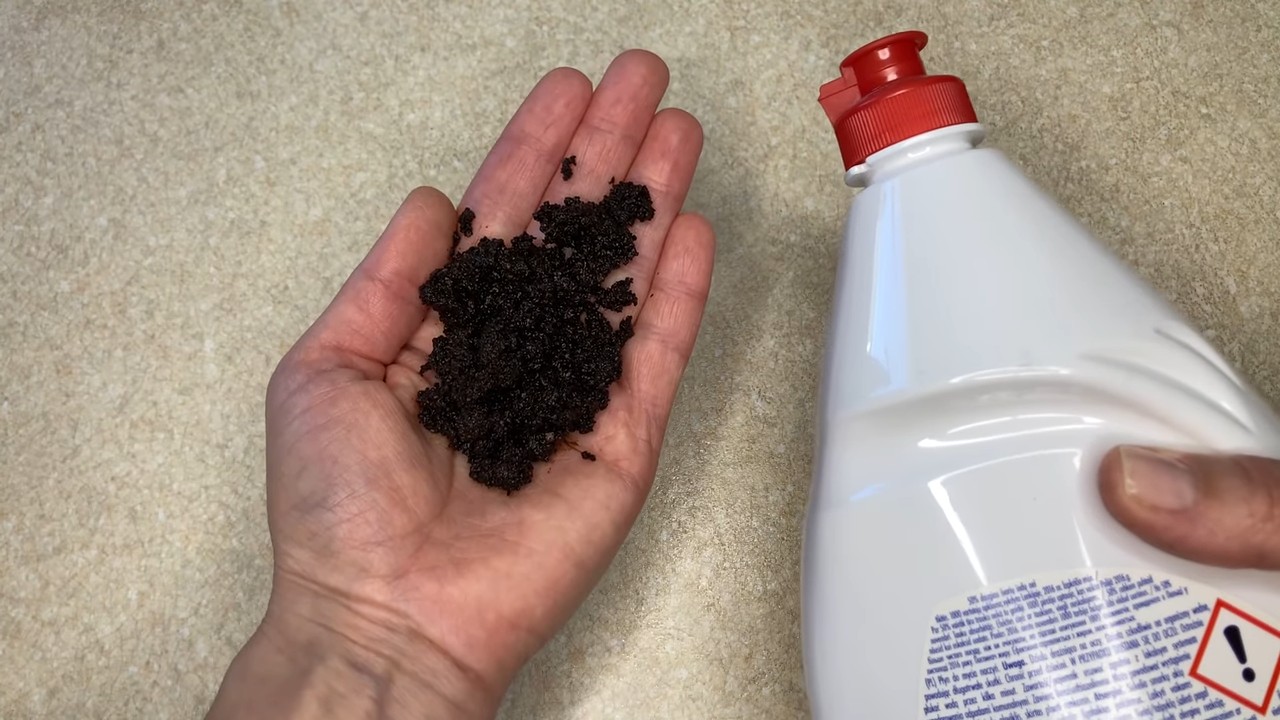
DIY Cleaning Powerhouse: Unleashing the Magic of Coffee and Dish Soap
Hey there, fellow DIY enthusiasts! Today, I’m super excited to share some amazing cleaning hacks using two things most of us have readily available: coffee and dish soap! You might be surprised at how versatile these everyday items can be when combined or used strategically around the house. Get ready to ditch those harsh chemicals and embrace some natural cleaning power!
Coffee Grounds: More Than Just a Morning Pick-Me-Up
We all know coffee grounds are great for brewing that perfect cup of joe, but did you know they can also be fantastic for cleaning and deodorizing? Let’s dive into some clever ways to reuse those spent grounds.
Deodorizing Your Fridge and Freezer
That lingering onion smell in your fridge? Coffee grounds to the rescue! They’re incredibly effective at absorbing odors.
Step-by-step instructions:
1. Collect your coffee grounds: After brewing your coffee, don’t toss those grounds! Let them cool completely.
2. Dry the grounds (optional, but recommended): Spread the grounds on a baking sheet lined with parchment paper and bake at a low temperature (around 200°F or 93°C) for about an hour, or until they’re dry. This prevents mold growth. You can also air dry them, but it takes longer.
3. Place in an open container: Put the dried coffee grounds in a small, open container like a bowl or a jar.
4. Place in the fridge or freezer: Place the container in your fridge or freezer.
5. Replace regularly: Replace the grounds every week or two, or when you notice the odor returning.
Scouring Pots and Pans
Those stubborn, burnt-on food particles on your pots and pans can be a real pain to remove. Coffee grounds offer a gentle, yet effective, abrasive solution.
Step-by-step instructions:
1. Gather your supplies: You’ll need used coffee grounds, dish soap, a sponge or scrub brush, and the dirty pot or pan.
2. Apply coffee grounds: Sprinkle a generous amount of damp (not soaking wet) coffee grounds onto the affected area of the pot or pan.
3. Add dish soap: Squirt a small amount of dish soap onto the coffee grounds.
4. Scrub gently: Using a sponge or scrub brush, gently scrub the burnt-on food particles. Avoid using excessive force, especially on non-stick surfaces. The coffee grounds act as a mild abrasive, helping to lift the food without scratching the surface.
5. Rinse thoroughly: Rinse the pot or pan thoroughly with warm water to remove all traces of coffee grounds and dish soap.
6. Repeat if necessary: If the burnt-on food is particularly stubborn, you may need to repeat the process.
Important Note: Avoid using coffee grounds on delicate surfaces like polished stainless steel or ceramic cooktops, as they could potentially cause scratches. Always test in an inconspicuous area first.
Cleaning Your Fireplace
Cleaning out a fireplace can be a dusty, messy job. Coffee grounds can help minimize the dust cloud.
Step-by-step instructions:
1. Sprinkle damp coffee grounds: Before you start scooping out the ashes, sprinkle damp coffee grounds over the ashes in the fireplace.
2. Scoop out the ashes: The damp coffee grounds will weigh down the ashes, preventing them from becoming airborne and creating a dust cloud.
3. Dispose of ashes: Carefully scoop out the ashes and dispose of them properly.
Gardening Benefits: Coffee Grounds for Your Plants
Okay, this isn’t exactly cleaning, but it’s a fantastic way to repurpose coffee grounds and benefit your garden! Coffee grounds are a great source of nitrogen and other nutrients that plants love.
Step-by-step instructions:
1. Collect your coffee grounds: As before, save those used coffee grounds.
2. Compost or use directly: You can add the coffee grounds to your compost pile, or you can sprinkle them directly around the base of acid-loving plants like azaleas, rhododendrons, and blueberries.
3. Mix with soil: Gently mix the coffee grounds into the top layer of soil.
Important Note: Don’t use too much coffee grounds, as they can make the soil too acidic. A thin layer is usually sufficient.
Dish Soap: The Unsung Hero of Household Cleaning
Dish soap is a staple in most kitchens, but its cleaning power extends far beyond just washing dishes. Let’s explore some surprising uses for this versatile cleaner.
Degreasing Kitchen Surfaces
Dish soap is excellent at cutting through grease and grime, making it perfect for cleaning kitchen surfaces like countertops, stovetops, and range hoods.
Step-by-step instructions:
1. Prepare your cleaning solution: Mix a few drops of dish soap with warm water in a spray bottle or a bucket.
2. Spray or apply the solution: Spray the solution onto the greasy surface or apply it with a sponge or cloth.
3. Let it sit for a few minutes: Allow the solution to sit for a few minutes to loosen the grease.
4. Wipe clean: Wipe the surface clean with a damp cloth or sponge.
5. Rinse (if necessary): If there’s any soapy residue, rinse the surface with clean water.
Cleaning Bathroom Fixtures
Dish soap can also be used to clean bathroom fixtures like sinks, toilets, and showers.
Step-by-step instructions:
1. Prepare your cleaning solution: Mix a few drops of dish soap with warm water in a spray bottle or a bucket.
2. Spray or apply the solution: Spray the solution onto the bathroom fixture or apply it with a sponge or cloth.
3. Scrub gently: Scrub the surface gently with a sponge or brush to remove soap scum and grime.
4. Rinse thoroughly: Rinse the fixture thoroughly with clean water.
Removing Stains from Clothing
Dish soap can be surprisingly effective at removing certain types of stains from clothing, especially grease stains.
Step-by-step instructions:
1. Apply dish soap directly to the stain: Apply a small amount of dish soap directly to the stain.
2. Gently rub the fabric: Gently rub the fabric together to work the dish soap into the stain.
3. Let it sit for a few minutes: Allow the dish soap to sit on the stain for a few minutes.
4. Rinse thoroughly: Rinse the fabric thoroughly with warm water.
5. Launder as usual: Launder the garment as usual.
Important Note: Always test the dish soap on an inconspicuous area of the fabric first to ensure it doesn’t cause any discoloration.
Cleaning Your Car
Believe it or not, dish soap can be used to wash your car! It’s a gentle and effective way to remove dirt and grime.
Step-by-step instructions:
1. Prepare your cleaning solution: Mix a small amount of dish soap with water in a bucket.
2. Rinse your car: Rinse your car with water to remove loose dirt and debris.
3. Wash your car: Using a sponge or wash mitt, wash your car with the dish soap solution.
4. Rinse thoroughly: Rinse your car thoroughly with clean water.
5. Dry your car: Dry your car with a clean towel or chamois.
Important Note: Avoid using dish soap with harsh chemicals or additives, as they could damage your car’s paint. Also, dish soap can strip away wax, so you may need to re-wax your car after washing it with dish soap.
The Dynamic Duo: Coffee Grounds and Dish Soap Combined!
Now for the real magic! Combining coffee grounds and dish soap can create a super-powered cleaning solution for certain tasks.
Cleaning Drains
This combination is excellent for unclogging and deodorizing drains. The coffee grounds act as a mild abrasive to scrub away buildup, while the dish soap helps to break down grease and grime.
Step-by-step instructions:
1. Pour coffee grounds down the drain: Pour about half a cup of used coffee grounds down the drain.
2. Add dish soap: Squirt a generous amount of dish soap down the drain.
3. Flush with hot water: Slowly pour a pot of boiling water down the drain.
Important Note: This method may not be suitable for all plumbing systems. If you have old or fragile pipes, consult a plumber before trying this. Also, avoid using this method too frequently, as it could potentially lead to clogs over time.
Cleaning Grills
Grills can get incredibly greasy and grimy. The abrasive power of coffee grounds combined with the degreasing action of dish soap makes for a powerful cleaning combination.
Step-by-step instructions
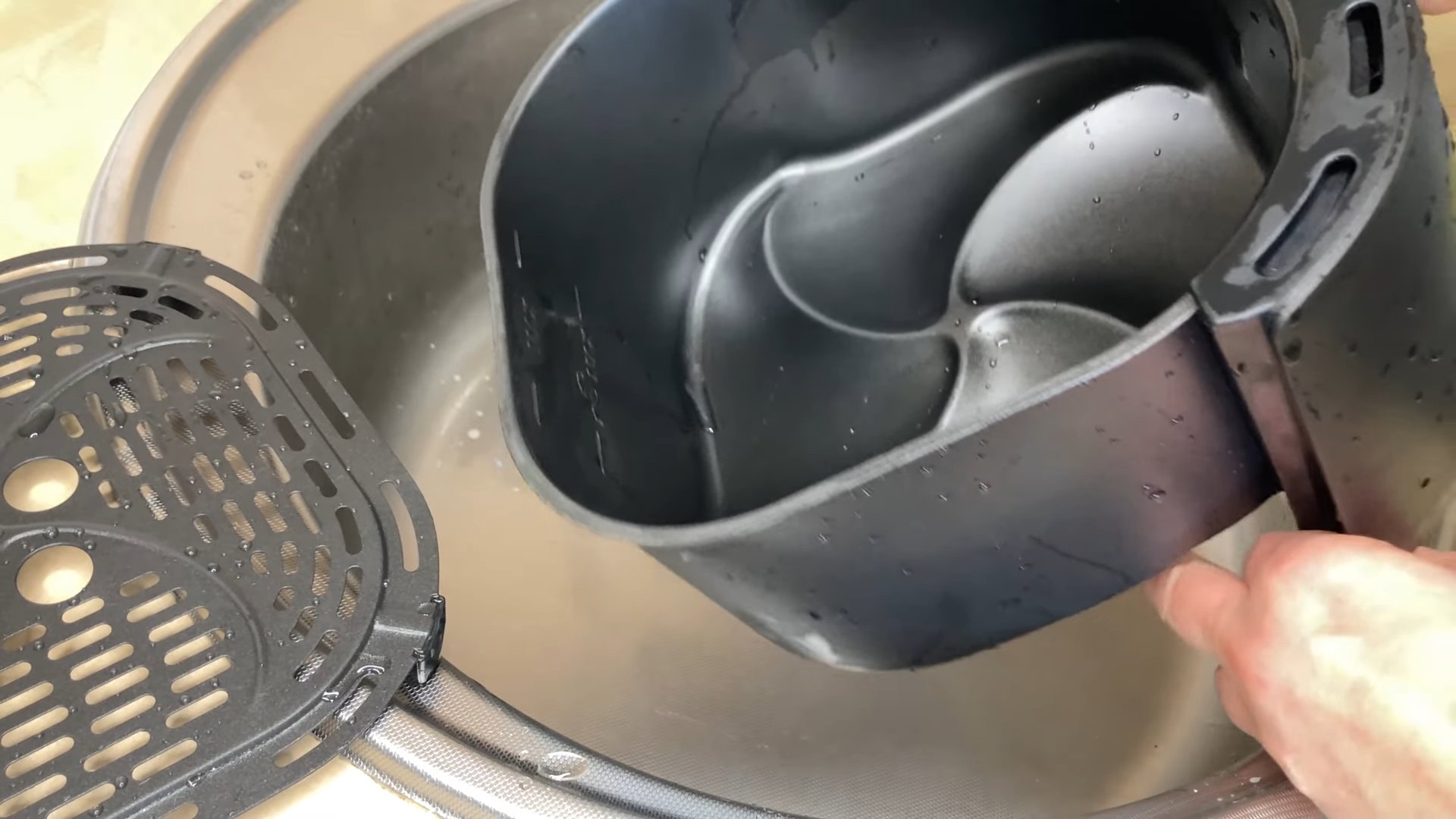
Conclusion
So, there you have it! This simple yet incredibly effective DIY trick, combining the power of coffee and dish soap, is a game-changer for anyone looking to tackle stubborn grease, grime, and odors around the house. It’s not just about cleaning; it’s about embracing a more sustainable and resourceful approach to household chores. Forget harsh chemicals and expensive specialty cleaners – this method harnesses the natural cleaning properties of coffee grounds and the degreasing action of dish soap to deliver remarkable results.
Why is this a must-try? Because it’s economical, eco-friendly, and surprisingly powerful. You’re likely already throwing away used coffee grounds, turning them into a valuable cleaning agent reduces waste and saves you money. The combination is particularly effective on tough stains and lingering odors that conventional cleaners often struggle with. Plus, the gentle abrasive nature of coffee grounds makes it ideal for scrubbing without scratching delicate surfaces.
But the beauty of this DIY trick lies in its versatility. Feel free to experiment with different types of dish soap to find your perfect combination. A citrus-scented soap can further enhance the deodorizing effect, while a grease-cutting formula will amplify the cleaning power. You can also adjust the ratio of coffee grounds to dish soap depending on the specific task at hand. For heavily soiled areas, use a higher concentration of coffee grounds. For lighter cleaning, a more diluted mixture will suffice.
Consider adding a few drops of essential oils, like lemon, tea tree, or lavender, to the mixture for an extra boost of fragrance and antibacterial properties. This is especially useful for cleaning kitchen surfaces or areas prone to mold and mildew. Another variation involves using coffee-infused oil. Simply infuse a carrier oil, like olive oil or coconut oil, with coffee grounds for a few weeks, then use this oil in combination with dish soap for a moisturizing and cleaning powerhouse. This is particularly beneficial for cleaning wooden furniture or leather goods.
We wholeheartedly encourage you to give this DIY coffee and dish soap cleaning trick a try. You’ll be amazed at the results and the satisfaction of using a natural, homemade solution. Don’t just take our word for it – experience the difference for yourself!
Once you’ve tried it, we’d love to hear about your experience. Share your tips, variations, and before-and-after photos in the comments section below. Let’s build a community of resourceful cleaners who are passionate about sustainable living. Your feedback will not only help others discover the benefits of this DIY trick but also inspire new and innovative ways to use coffee and dish soap for cleaning. So, go ahead, get your hands dirty (or clean!), and let us know what you think! We are confident that this simple yet effective method will become a staple in your cleaning routine. Embrace the power of coffee and dish soap, and transform your cleaning experience today!
Frequently Asked Questions (FAQs)
1. What types of coffee grounds work best for this DIY cleaning trick?
Any type of coffee grounds can be used, whether they are from drip coffee, espresso, or French press. However, finer grounds tend to be more effective for scrubbing and less likely to clog drains. If you’re concerned about clogging, use coarser grounds or strain the mixture before disposing of it down the drain. Remember to always run plenty of water after rinsing to prevent any potential buildup.
2. Can I use this mixture on all surfaces?
While coffee grounds are generally gentle, it’s always best to test the mixture on an inconspicuous area first, especially on delicate surfaces like polished wood or painted walls. Avoid using it on porous materials like unsealed grout, as the coffee grounds can stain. For surfaces prone to scratching, use a softer sponge or cloth and apply gentle pressure.
3. How do I store the coffee and dish soap mixture?
Store the mixture in an airtight container in a cool, dry place. It’s best to use it within a week or two, as the coffee grounds can start to mold over time. If you notice any signs of mold or a foul odor, discard the mixture immediately. You can also store it in the refrigerator to extend its shelf life.
4. Is this mixture safe for septic systems?
While small amounts of coffee grounds are generally safe for septic systems, it’s best to avoid pouring large quantities down the drain. The grounds can accumulate over time and potentially cause clogs. Instead, consider composting the used coffee grounds or disposing of them in the trash.
5. What are some specific uses for this DIY cleaning solution?
This mixture is excellent for cleaning:
* Greasy stovetops and ovens
* Dirty sinks and countertops
* Grimy pots and pans
* Outdoor furniture
* Barbecue grills
* Removing stains from carpets and upholstery (test in an inconspicuous area first)
* Deodorizing garbage disposals (pour a small amount down the drain and run the disposal)
6. Can I use this mixture to clean my coffee maker?
Yes, you can use a diluted version of this mixture to clean your coffee maker. Simply mix a small amount of coffee grounds and dish soap with water and run it through the brewing cycle. Follow with a cycle of plain water to rinse thoroughly. This will help remove coffee residue and mineral buildup.
7. What kind of dish soap should I use?
Any type of dish soap will work, but a grease-cutting formula is particularly effective for cleaning greasy surfaces. You can also choose a dish soap with a pleasant scent to enhance the deodorizing effect. Consider using an eco-friendly dish soap to further reduce your environmental impact.
8. How do I dispose of the used coffee grounds after cleaning?
The best way to dispose of used coffee grounds is to compost them. They are a valuable addition to compost piles, providing essential nutrients for plants. If you don’t have a compost pile, you can dispose of them in the trash. Avoid pouring large quantities down the drain, as this can potentially cause clogs.
9. Can I use this mixture to clean my car?
Yes, you can use a diluted version of this mixture to clean your car’s interior, such as the dashboard and upholstery. However, be sure to test it in an inconspicuous area first to ensure it doesn’t damage the material. Avoid using it on the car’s exterior, as the coffee grounds can scratch the paint.
10. What if I don’t have coffee grounds? Can I use something else?
While coffee grounds are the key ingredient in this DIY cleaning trick, you can try using other mild abrasives like baking soda or salt as a substitute. However, coffee grounds have unique properties that make them particularly effective for cleaning and deodorizing, so they are the preferred choice.

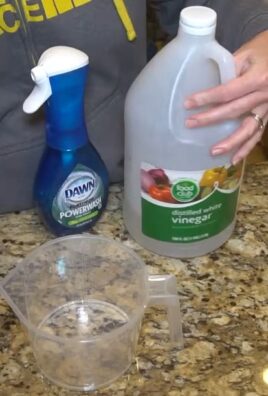
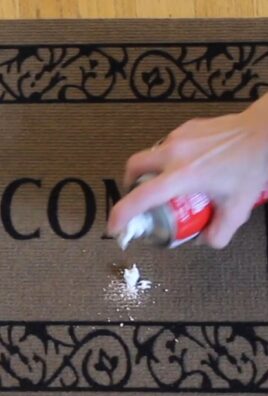
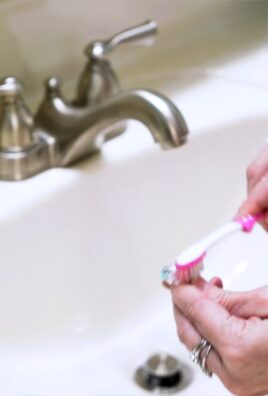
Leave a Comment